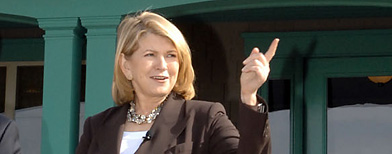You’ve seen these men in black everywhere, usually in a group, threatening a movie hero. But how much do you really know about the dark warriors of feudal Japan? It’s time to separate the men from the myth.
1. The ninja were a clan of evil assassins for hire.
Myth! In the movies, ninja are portrayed as evil mercenaries crawling out of the woodwork to make sashimi out of the good guy. In reality, they were mountain people of Japan who were systematically harassed by the samurai ruling class 400 years ago. Mostly they farmed. For self-defense when outnumbered, the ninja created a fighting system call
Ninjutsu, “the art of stealth”. When money got tight the occasional ninja would sell his skills. These few renegades created the stereotype of ninja as the warrior killer.
2. One ninja could sometimes defeat five soldiers.
Fact! Ninja specifically trained to fight more than one opponent. But they considered escape a victory. Their big-city oppressors outnumbered them, so training involved “dirty” fighting tactics that would scare or injure adversaries just long enough for ninja to get away. The samurai were trained in one-on-one fighting against an opponent who actively engages, not a slippery man in black who kicks you in the toe and disappears. Ninja learned to get the job done quickly. A ninja boxing match wouldn’t make a good spectator sport: one pokes the other in the eye and climbs a tree.
3. All ninja were male.
Myth! Lady ninja were called
kunoichi. Occasionally, some wielded swords like the men, but most often, they were trained as spies and messengers to help gather information that would help their clan. Kunoichi used the illusion of helplessness to their advantage, wielding secret weapons like sashes, fans, combs, and umbrellas when forced to fight. n occasion, they assassinated unsuspecting “suitors”. They even carried a bag of little, bladed finger gloves that gave them the equivalent of iron press-on nails of death!
4. Ninja practiced black magic and had supernatural powers.
Myth! While ninja may have appeared magical, they put their pajamas on one leg at a time, just like everybody else. In battle, though, they used this legend to frighten their enemies. The height of ninja activities was during the 1600s; but by the 1800s, most ninja action involved farming or looking for work. Yet ninja buzz kept growing through art, theater, and word of mouth. By the 1900s, ninja were portrayed as practically superhuman.
5. Ninjas always wore black.
Myth! In real life, ninja dressed for the job at hand; they usually looked like everyone else. When sneaking into an enemy lair, they wore the uniforms of their adversaries to trick them. By the Edo Period (1603-1867), their exploits were famous enough to hit the Kabuki theater. Taking the stealthy reputation of the ninja into consideration, Kabuki troupes decided to portray ninja the same as stagehands-dressed all in black so as not to be seen by the audience. Henceforth, all ninja were portrayed in black.
6. Ninja in training walked through fire, stood under freezing waterfalls, and dangled themelves over cliffs.
Fact! As Japan’s Edo Period wore on, the ninja became less secretive. There were no more feudal wars left to fight. Ninja masters wrote books, opened schools to teach others, and became scholars. And their fighting became world famous. In the 1980s, the American film
Enter the Ninja set off a brief ninja craze in the United States, and lots of schools opened (some more authentic than others). There are thousands of practicing ninja in the United States today.







 Scientists in East Timor have discovered the skeleton of a rat three times larger than any rat living today:
Scientists in East Timor have discovered the skeleton of a rat three times larger than any rat living today: The Sand dollar is well named – it looks like a coin after all. However, this denizen of the Pacific coast has a trick up its sleeve. It can clone itself.
The Sand dollar is well named – it looks like a coin after all. However, this denizen of the Pacific coast has a trick up its sleeve. It can clone itself.
 The Plastiki is a ship made from plastic bottles. It was built from this frequently wasted product in order to promote recycling. Last March it left California, heading for Australia. Today, it docked in Sydney, completing a 8,000-mile voyage. The captain, David de Rothschild, described the journey:
The Plastiki is a ship made from plastic bottles. It was built from this frequently wasted product in order to promote recycling. Last March it left California, heading for Australia. Today, it docked in Sydney, completing a 8,000-mile voyage. The captain, David de Rothschild, described the journey: Ecologically speaking, devastation of the Amazon rainforest is far greater than the Gulf of Mexico oil spill. So why do we care more about the Gulf?
Ecologically speaking, devastation of the Amazon rainforest is far greater than the Gulf of Mexico oil spill. So why do we care more about the Gulf?![[noname.jpg]](https://blogger.googleusercontent.com/img/b/R29vZ2xl/AVvXsEge5sv_HdwEMeFtcgejFZmmN6CfLLcCPg0KhBVIdk7gQTbo5pgYeded2P-M9piz2UUq84tg111G_pjlmL5dG9CUsLUZdWTKnLm_OfDz1d5Vz2d6XjREelZcYnGSITgqUaYiev3Scw5P1GE/s280/noname.jpg)

 I’m sure you’ve all heard your parents tell you how they walked to school in the snow, uphill, both ways, but how has parenting changed through the ages?
I’m sure you’ve all heard your parents tell you how they walked to school in the snow, uphill, both ways, but how has parenting changed through the ages? 





 When can a price increase of a penny land a company in a lawsuit? When you’re name is 99 Cents Only Store:
When can a price increase of a penny land a company in a lawsuit? When you’re name is 99 Cents Only Store:

 Michael Warring, president of American Educational Products in Fort Collins, Colo., had his shipment all ready: A school's worth of small bags, each one filled with an igneous, sedimentary and metamorphic rock. Then the school canceled its order. Says Warring, "They apparently decided rocks could be harmful to children."... The children will study a poster of rocks instead... Well, there's the Graco Harmony High Chair. The commission warns parents to "stop using product immediately." Yikes! Scary! Is it ejecting kids? Spontaneously combusting? Not quite. Of the 1,200,000 units sold, the CPSC received "24 reports of injuries, including bumps and bruises to the head, a hairline fracture to the arm, and cuts, bumps, bruises and scratches to the body." In other words: For every 50,000 chairs sold, a single child has suffered a bruise, bump or--once--a hairline fracture. Now look: Nobody likes to see a sweetheart suffer. But the Harmony high chair does not exactly sound like baby's first Pinto.
Michael Warring, president of American Educational Products in Fort Collins, Colo., had his shipment all ready: A school's worth of small bags, each one filled with an igneous, sedimentary and metamorphic rock. Then the school canceled its order. Says Warring, "They apparently decided rocks could be harmful to children."... The children will study a poster of rocks instead... Well, there's the Graco Harmony High Chair. The commission warns parents to "stop using product immediately." Yikes! Scary! Is it ejecting kids? Spontaneously combusting? Not quite. Of the 1,200,000 units sold, the CPSC received "24 reports of injuries, including bumps and bruises to the head, a hairline fracture to the arm, and cuts, bumps, bruises and scratches to the body." In other words: For every 50,000 chairs sold, a single child has suffered a bruise, bump or--once--a hairline fracture. Now look: Nobody likes to see a sweetheart suffer. But the Harmony high chair does not exactly sound like baby's first Pinto. 





 As if insecure people haven’t had enough things to worry about, medical researchers have just added one more to the pile: they’re more likely to get heart attacks.
As if insecure people haven’t had enough things to worry about, medical researchers have just added one more to the pile: they’re more likely to get heart attacks.







